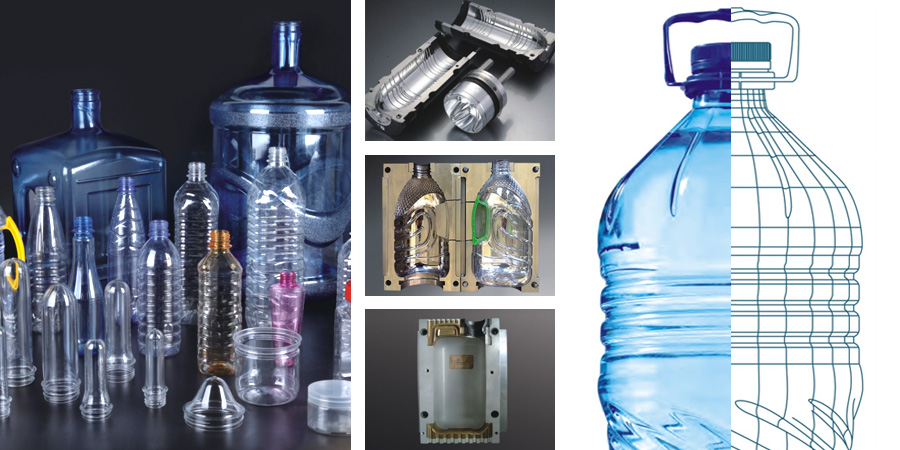A PET mould is a plastic moulding process, which is used to manufacture plastic or thermo plastic bottles. The main advantage of using PET is that the material can be manufactured to a very high tolerance level. The PET mould construction: The outer mould layer is normally made from high-density polyethylene (HDPE) film.
It has been found that injection moulding methodologies yield consistent, superior quality products than other common manufacturing processes. One of the reasons for the consistent and excellent results is the consistent application of heat throughout the procedure. High quality injection moulds can also be designed to create a precise interior injection of specific resins or plastics.
One of the most common uses for the pet moulds is manufacture of PET bottles. It is possible to manufacture the required volume of the product through preform moulds. As compared to other methods, PET preform moulds help in reducing wastage. Preform moudings can also be recycled as compared to other methods of manufacturing such as injection moulding. Moreover, pet bottles are an environmentally friendly product since they use a reduced amount of energy to produce them.

The preform bottles are manufactured using the following basic steps. The first step in the process of production is the development of the preform mould, which is done through closed loop heat treatment and injection of freeze-dried material into the mould. The next step is development of the cavity for the plastic resin, which is generally formed inside the preform. After this, the mould is cooled down and then shaped using a CNCF thermopump or Teflon-coated wall thickness, which helps to seal the cavities and prevent evaporation of the melted plastic.
A cavity filled with the material temperature solution is then produced in the mould. The cooled cavities are then manually slid to the desired injection position, where they are rapidly cooled down. The cavities are kept in this position until the desired temperature is reached. Once this is achieved, the cavities are removed by the application of hydraulic pressure and then the mould is removed by manual removal. The entire process requires high precision machinery and equipment along with high quality injection machines.
An eccentric gate, which is also known as a stopcock, is used to open and close the mould. This is a critical component for PET preform moulds and is normally made from steel or aluminium. The gate acts as a control mechanism that prevents overheating and runaway behaviour during the manufacturing process. To manufacture PET bottles, it is important to have an efficient injection system, which is capable of delivering consistent material temperatures over long durations. The process is complex, but well suited for injection mould production, especially for the large volume production of single colour PET bottles. High quality materials are required for PET bottles and moulding to meet safety standards and to ensure consistent PET bottle production at consistent temperatures.